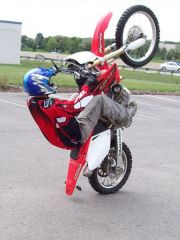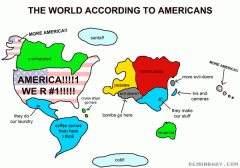
justin0469
Members-
Posts
3,030 -
Joined
-
Last visited
Content Type
Profiles
Forums
Gallery
Store
Events
Everything posted by justin0469
-
sweet. i will no longer be bored this week
-
http://andyslife.org/games/sand.php At first I was like, BORING. but then once you mess with it for a little bit you can do some cool stuff. Huge time waster and no real point at all, but kills time at work
-
Buffalo buffalo Buffalo buffalo buffalo buffalo Buffalo buffalo
justin0469 replied to justin0469's topic in Dumpster
now badger is weird -
Buffalo buffalo Buffalo buffalo buffalo buffalo Buffalo buffalo
justin0469 replied to justin0469's topic in Dumpster
damn you -
Buffalo buffalo Buffalo buffalo buffalo buffalo Buffalo buffalo
justin0469 replied to justin0469's topic in Dumpster
so following that idea would Badger badger Badger badger badger badger Badger badger work? Badger is a city in Iowa, badger is a verb as in badgering or bugging someone, badger is an animal. -
Buffalo buffalo Buffalo buffalo buffalo buffalo Buffalo buffalo
justin0469 replied to justin0469's topic in Dumpster
buffalo looks and sounds weird to see and hear -
didnt know there was going to be a place so close to hump the new RSV4s when they arrive!
-
-
aaaaaand that's why it got put in this section
-
oopsie.... didn't show up in search for "bread kills"
-
Bread Kills! 1. More than 98 percent of convicted felons are bread users. 2. Fully HALF of all children who grow up in bread-consuming households score below average on standardized tests. 3. In the 18th century, when virtually all bread was baked in the home, the average life expectancy was less than 50 years; infant mortality rates were unacceptably high; many women died in childbirth; and diseases such as typhoid, yellow fever, and influenza ravaged whole nations. 4. Every piece of bread you eat brings you nearer to death. 5. Bread is associated with all the major diseases of the body. For example, nearly all sick people have eaten bread. The effects are obviously cumulative: 99.9% of all people who die from cancer have eaten bread. 100% of all soldiers have eaten bread. 96.9% of all Communist sympathizers have eaten bread. 99.7% of the people involved in air and auto accidents ate bread within 6 months preceding the accident. 93.1% of juvenile delinquents came from homes where bread is served frequently. 6. Evidence points to the long-term effects of bread eating: Of all people born before 1839 who later dined on bread, there has been a 100% mortality rate. 7. Bread is made from a substance called "dough." It has been proven that as little as a teaspoon of dough can be used to suffocate a lab rat. The average American eats more bread than that in one day! 8. Primitive tribal societies that have no bread exhibit a low incidence of cancer, Alzheimer's, Parkinson's disease, and osteoporosis. 9. Bread has been proven to be addictive. Subjects deprived of bread and being fed only water begged for bread after as little as two days. 10. Bread is often a "gateway" food item, leading the user to "harder" items such as butter, jelly, peanut butter, and even cold cuts. 11. Bread has been proven to absorb water. Since the human body is more than 90 percent water, it follows that eating bread could lead to your body being taken over by this absorptive food product, turning you into a soggy, gooey bread-pudding person. 12. Newborn babies can choke on bread. 13. Bread is baked at temperatures as high as 400 degrees Fahrenheit! That kind of heat can kill an adult in less than one minute. 14. Most bread eaters are utterly unable to distinguish between significant scientific fact and meaningless statistical babbling. In light of these frightening statistics, we propose the following bread restrictions: 1. No sale of bread to minors. 2. A nationwide "Just Say No To Toast" campaign, complete celebrity TV spots and bumper stickers. 3. A 300 percent federal tax on all bread to pay for all the societal ills we might associate with bread. 4. No animal or human images, nor any primary colors (which may appeal to children) may be used to promote bread usage. 5. The establishment of "Bread-free" zones around schools.
-
From the album: Funny Stuff
-
true story... he humped the dog
-
used for pleasuring
-
Start-ups partner on universal wireless charger by Candace Lombardi Green Plug's twist port universal charger. (Credit: Green Plug) Start-ups Green Plug and WiPower are working together on a universal wireless charger for portable devices, the companies said Thursday. The partnership makes sense since GreenPlug has developed a protocol to allow power sources and portable devices to communicate, while WiPower has invented technology to transmit power wirelessly over short distances. Green Plug's universal chargers allow portable electronic devices containing its embedded Greentalk chip to be charged from a universal port. Once a device is plugged in to a Green Plug charger port, the charger's Greentalk protocol reads the chip inside the device to determine the power supply needed to charge it. It then tunes its power output to charge the device accordingly. WiPower has a developed technology that can transmit power over short distances wirelessly. You can place a device on a WiPower pad in any position, and it automatically begins recharging. Powermat makes a wireless charging dock that works with cases made for specific devices. (Credit: Powermat) Here's the caveat. For this to become a reality, manufacturers must opt to embed Greentalk chips into their products instead of offering individual power adapters for each model they make. The idea is considered green because millions of chargers are thrown away each year when people buy new devices and discard the old chargers. Embracing the Greentalk chip could theoretically prevent millions of chargers from being manufactured in the first place. The idea is not entirely unique, though. Powermat makes a pad for wirelessy charging any Powermat-enabled device. In order to work with it, the device must be placed inside a special case that houses a Powermat receiver programmed to work with the charger and a specific device's needs. Users can also buy a cube with eight different types of ports that can sit on the mat and be plugged in to compatible devices.
-
haha... slick
-
NASA spacecraft confirms water ice deposits on moon by William Harwood Making a bigger splash than expected, the crash of an empty rocket stage in a permanently shadowed crater near the moon's south pole last month kicked up a surprising amount of water ice and vapor, confirming the presence of a potentially valuable resource for future space travelers. "I'm here today to tell you that indeed, yes, we found water," said Anthony Colaprete, the project scientist and principal investigator for the Lunar Crater Observation and Sensing Satellite. "And we didn't find just a little bit, we found a significant amount." Holding up water jugs to make the point, he said "if you remember, a month ago we were talking about teaspoons going into glasses over football fields. Well, now I can say today that in the 20- to 30-meter (65- to 100-foot-wide) crater LCROSS made, we found maybe about a dozen of these two-gallon buckets worth of water." And more than water. Data from the LCROSS instruments show signs of other compounds that may shed light on the moon's evolution. "It's a whole lot more beyond the water," Colaprete said. "That's the exciting part in my mind, it's not only about the water now. There's actually a lot more here that we're going to be talking about in the months ahead, looking at the LCROSS data." Spectroscopic data from NASA's LCROSS lunar impactor shows the presence of water in two specific bands (yellow regions). (Credit: NASA) Said Greg Delory, a researcher at the University of California at Berkeley: "This is not your father's moon. Rather than a dead and unchanging world, it could in fact be a very dynamic and interesting one that could tell us unique things about the Earth-moon system and the early solar system." Michael Wargo, chief lunar scientist at NASA headquarters in Washington, said the discovery holds promise for future exploration. Using solar energy, future astronauts could, in theory, break down recovered ice and in effect live off the land. "Water can be used for the kind of things we think about every day, drinking water if we have extended crews on the surface," he said. "You can break it down and have breathable air for crews to breathe. But also, if you have significant quantities of this stuff, water really is the constituents of one of the most potent rocket fuels: oxygen and hydrogen." Whether the water ice detected by LCROSS might be accessible to future astronauts remains to be seen. But scientists were elated with the initial findings. The $79 million LCROSS mission was launched June 18 as a companion payload to NASA's $504 million Lunar Reconnaissance Orbiter spacecraft. Working in a 31-mile-high orbit, LRO is designed to create a high-resolution map of the moon's surface to help identify sites for future manned missions. It also is measuring the solar and cosmic radiation that future lunar explorers will face and mapping out the surface topology, mineralogy, and chemical composition of Earth's nearest neighbor. One year will be spent scouting future landing sites followed by three years of purely scientific observations. While LRO was launched directly to the moon by an Atlas 5 rocket, LCROSS and the booster's empty Centaur upper stage were sent into a looping four-month orbit back around the Earth. The spacecraft aimed itself and the attached Centaur stage back at the moon, targeting a permanently shadowed crater near the south pole. Data from previous spacecraft indicated the presence of hydrogen in the polar regions, possibly associated with water ice just below the surface. LCROSS mission managers initially selected a target crater known as Cabeus A, but after additional analysis of topographic data, the target was switched to nearby Cabeus, a crater measuring some 62 miles across and about two-and-a-half miles deep. LCROSS successfully separated from the Centaur stage the night before impact, rotated 180 degrees to aim its instruments forward and then followed its doomed companion to the surface, trailing it by about four minutes. The Centaur is believed to have hit the moon within about 650 feet of the planned target, blasting out a crater 65 feet to 100 feet across. Colaprete showed photographs from LCROSS Friday that clearly showed the plume of debris kicked up by the crash. Another photo showed the crater itself. LCROSS flew through the ejecta cloud, collecting data all the while, before crashing a short distance away. The Centaur impact was not particularly impressive to the untrained eye--a pinpoint flash of light in the inky darkness of the crater's shadowed terrain--and many observers, expecting a more dramatic show as indicated in NASA animations, were disappointed. But Colaprete said Friday the impact more than lived up to scientific expectations. Spectroscopic data from two instruments aboard LCROSS clearly showed the presence of water ice, along with a variety of other materials, in the ejecta plume. Shown is the ejecta plume at about 20 seconds after impact. (Credit: NASA) "We can constrain right now how much water we think is in the field of view of our instrument," he said. "Based on these measurements, there is more than 100 kilograms in the field of view of our instrument. What does that mean, a hundred kilograms? That's the dozen or so two-gallon buckets I described. "But what we need to do next is take all the information, the amount of ejecta, the size of the crater, how this all changed over time and actually reconstruct the entire event, understand how it all fits back into the ground along with all the other things we've seen in the ejecta plume to really understand this whole thing." Delory said more analysis will be needed to figure out where the water ice originated. "One possible source of the water is from comets," he said. "If that's true, and the lunar polar regions really are repositories for this material, they are a literal treasure trove of information in terms of the composition of comets, which are themselves indicative of early solar system conditions. That would be of extreme interest to many planetary scientists." Another possibility, he said, is that the water ice is the result of chemical reactions that start with the solar wind, "which is basically an ionized gas streaming from the sun composed mainly of hydrogen." "It impacts the lunar surface, undergoes chemistry, eventually these molecules hop around the moon and end up concentrated around the poles," he said. "Studying those deposits would tell us something about solar history, also about the history of chemical reactions occurring on the surface of the moon. Two completely different theories, we don't know which one is right yet." Other sources are also possible, he said, including deposits from molecular clouds the solar system may have passed through earlier in its evolution as well as subtle chemical processes on the moon itself.
-
http://news.cnet.com/8301-17852_3-10397875-71.html http://www.youtube.com/watch?v=MmIECZZ6fbM Man allegedly steals bus, posts video on YouTube by Chris Matyszczyk Vermont is an interesting place with some very interesting residents. Brigham Young and John Deere are both said to hail from this mountainous state. But will either turn out to be quite as fascinating as Jacob Rehm? According to WCAX News, Rehm stands accused of illegally borrowing a $500,000 tour bus and taking it for a little spin. Rehm is a former employee of the bus company and will make an appearance in the Vermont District Court on Tuesday. However, something else will also be making a court appearance at the same time--a video entitled "The Fabulous Bus Ride," which was posted on YouTube on November 5. It does not appear to have been made by a concerned and civic-minded passerby. No, it is alleged to have been made by Rehm. In the notes accompanying the YouTube posting, someone whose handle is vudushuz, says: "Vermont to Connecticut in the Middle-O-the-Night :)Originally thought about heading to Pennsylvania but... anyways, stopped in Bradford for GREAT pizza at the Exit." As you will see from the embedded piece, the video is quite a work of art, with music by Yes and some very interesting camera work. I wonder what the judge will think of the alleged director.
-
http://chillicothe.craigslist.org/mcy/1402366461.html
-
http://ohio-riders.net/showthread.php?t=38222




